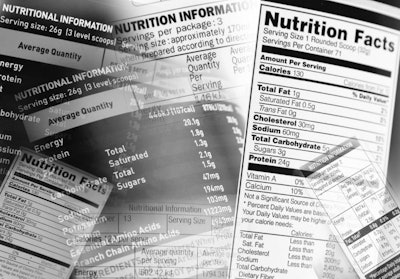
A new report on sustainable nutrition and agriculture ignores scientific consensus and wildly overstates its own conclusions, scientists and industry leaders say.
The report, released Wednesday by the international EAT-Lancet Commission, aimed to merge research on sustainable agriculture and human nutrition to develop global dietary guidelines capable of feeding a growing population, improving human health, and maintaining the natural environment. But since its release, other scientists have called out the commission for cherry-picking data and engaging in sensationalism, while industry leaders have labeled the report a baseless attack on animal agriculture.
“Let’s call the EAT-Lancet Commission’s report what it is — yet another organized attack on animal agriculture that is not reflective of the current and accurate science on the industry’s substantial sustainability advances,” Joel Newman, president and CEO of the Animal Feed Industry Association, said in a statement.
After examining nutritional and environmental research, the 37-member EAT-Lancet Commission settled on a largely plant-based diet comprised of about 200 grams of whole grains and 200-600 grams of vegetables per day. The diet allows for up to 14 grams of red meat per day, 58 grams of poultry, 100 grams of fish and 250 grams of nuts and legumes. This is roughly equivalent to one hamburger per week, or one steak per month, and about 1.5 eggs per week, according to Walter Willett, one of the members of the EAT-Lancet commission and a professor of epidemiology and nutrition at Harvard’s T.H. Chan School of Public Health.
While that may sound extreme, Willett said, it’s actually in line with the Mediterranean diet, a popular health plan that has grown steadily in popularity since the 1970s.
If all humans were to adopt the plan, Willett said, the commission’s models project that it could stave off 11 million premature deaths associated with poor diet each year. Johan Rockström, another member of the commission and a professor of environmental science at Stockholm University, said the plan would also convert agricultural land from a net emitter of greenhouse gasses, to a carbon sink by the year 2050. This transition is essential to meeting the global decarbonization goals outlined in the Paris climate agreement, which aims to keep global warming below 2 degrees Celsius (3.6 degrees Fahrenheit).
To accomplish these goals, global food systems would have to reduce waste by at least half and prevent any expansion of agricultural lands into undeveloped areas, Rockström said.
Scientist: Emissions information inflated
But the commission’s own data suggest these measures would in fact make very little difference with respect to environmental measures, according to Frank Mitloehner, a professor of animal science at University of California, Davis.
The commission’s analysis, as outlined in Wednesday’s report, found little difference in the environmental impact of various diets, including current global norms, pescatarian, vegetarian and vegan diets, as well as the commission’s recommended diet. All five analyzed diets required roughly the same amount of cropland, water and fertilizer use, and had similarly harmful effects on biodiversity. The only marked difference between diets, according to the report, was in greenhouse gas emissions, which would drop from 8.9 gigatons of CO2 equivalent per year, to 5 gigatons of CO2 equivalent per year if humans were to adopt alternative diets.
The problem with this assertion is that the commission inflated the warming effects of methane, according to Mitloehner, who has studied greenhouse gas emissions from livestock since 2002. The report states that methane is 56 times more potent than CO2 with respect to warming potential. While methane is indeed more potent than CO2, Mitloehner said the consensus within his field is that it is only 28 times more potent than CO2. The report also disregards the fact that methane breaks down in the atmosphere much faster than CO2, Mitloehner said.
“So they doubled the global warming potential of methane,” he said, “and by doing so, they doubled the environmental impact of livestock.”
Agricultural sector addressing issues
Mitloehner said the commission has spent the past two years claiming that dramatic dietary changes are necessary to stave off devastating climate effects. Given that hype preceding the report's release, he said he had assumed that the commission had identified some kind of breakthrough with respect to decreasing agricultural emissions, and was disappointed to discover that it had not.
“There are some real issues that we have, that we can address, and that I know farmers are working on,” Mitloehner said, “but I also expect people in the ivory tower to take their responsibility seriously, and not put out some sensational report not based on factual data.”
The agricultural sector has already succeeded in dramatically reducing its greenhouse gas emissions, Mitloehner said, and could continue to do so with additional advances in technology and the development of feed additives that help to reduce methane emissions.
“The animal food industry is doing even more than ever before in benchmarking its environmental footprint and providing data to farmers and ranchers so they can make better decisions,” Newman agreed. “Unfortunately, the report’s calls to return to primarily an ‘agrarian lifestyle’ will undo years of research and innovation.”

















